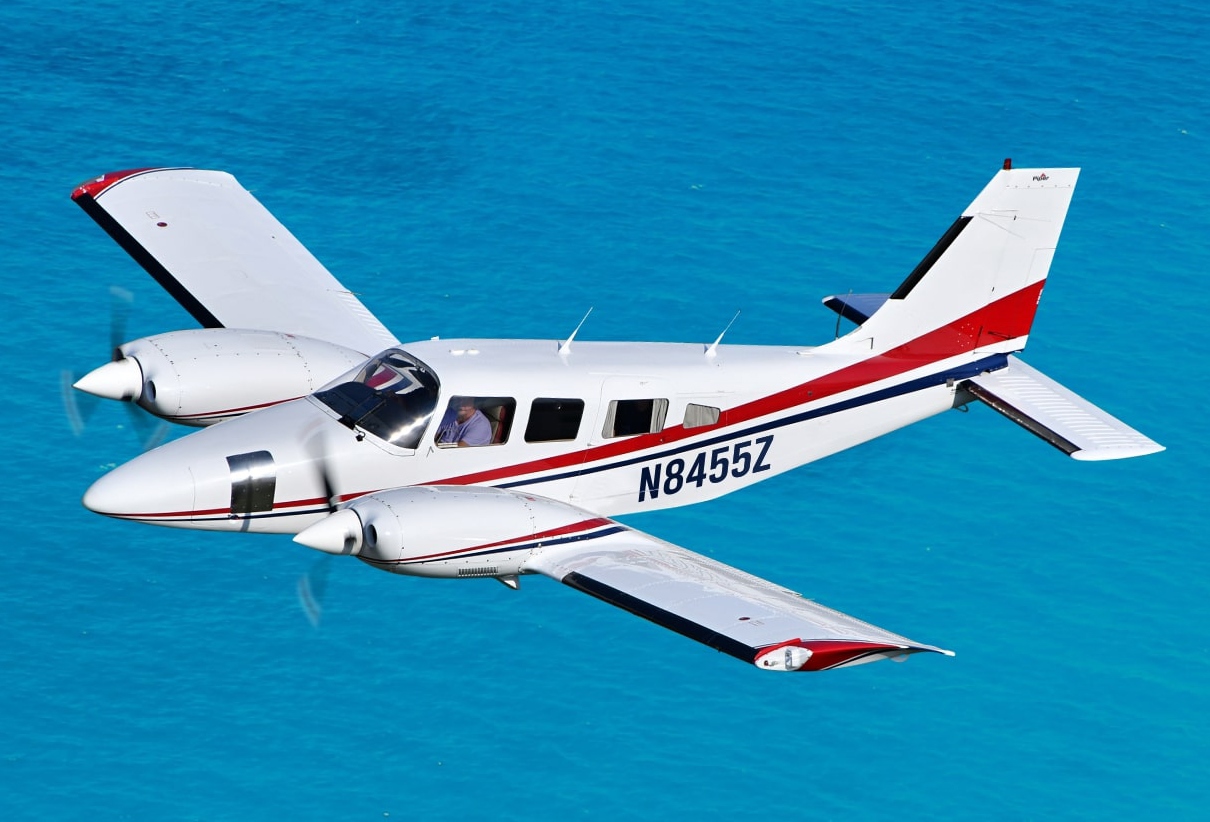Unveiling Secrets: 10 Facts About Piper Seneca III
The Piper Seneca III has long stood as a beacon of versatility and reliability in the world of light twin-engine aircraft. Known for its impressive performance and adaptability, the Seneca III continues to captivate aviation enthusiasts and professionals alike. In this article, we delve into the intricate features and fascinating facts that make the Piper Seneca III an iconic aircraft in the aviation industry.
Discover the Piper Seneca III: A Deep Dive into Its Features

The Piper Seneca III, a product of the renowned Piper Aircraft Corporation, is celebrated for its exceptional design and engineering. This twin-engine piston aircraft is equipped with a pair of turbocharged, six-cylinder engines, providing robust power and performance. These engines allow the Seneca III to achieve a cruising speed of approximately 200 knots and a service ceiling of around 25,000 feet, making it suitable for a wide range of flying conditions and long-distance travel.
One of the standout features of the Piper Seneca III is its spacious and comfortable cabin. Designed to accommodate up to six passengers, the cabin is equipped with club seating, providing ample legroom and a pleasant flying experience. The aircraft’s generous payload capacity also makes it ideal for carrying both passengers and cargo without compromising on performance. The interior can be easily reconfigured, allowing for different seating arrangements and cargo setups as needed.
In terms of avionics, the Seneca III has evolved to incorporate modern technology, enhancing safety and navigation. Many Seneca IIIs have been retrofitted with advanced glass cockpits, featuring digital displays that provide pilots with critical information at a glance. This modernization has improved situational awareness and reduced pilot workload, making the Seneca III an appealing choice for both experienced pilots and those transitioning to twin-engine aircraft.
Explore 10 Fascinating Facts About This Iconic Aircraft

- Legacy of Innovation: The Piper Seneca III was introduced in 1981, as part of the third generation of the Seneca line. It built upon the success of its predecessors with significant improvements in engine power and aerodynamics, solidifying its reputation as a reliable workhorse in the light twin-engine market.
- Turbocharged Power: The turbocharged engines in the Seneca III allow it to perform exceptionally well at high altitudes. This feature is particularly advantageous for flights over mountainous terrain, where the ability to maintain power at higher elevations is crucial for safety and efficiency.
- Enhanced Aerodynamics: The design of the Seneca III includes aerodynamic refinements that reduce drag and improve fuel efficiency. These enhancements contribute to the aircraft’s impressive range and speed, making it an attractive option for both private owners and charter operators.
- Versatile Usage: The aircraft’s versatility extends beyond personal and business travel. It is frequently used in training programs for multi-engine pilots, owing to its forgiving handling characteristics and reliable performance, providing an excellent platform for skill development.
- Global Presence: The Piper Seneca III enjoys a strong presence around the world, with numerous operators in various countries. This global reach is a testament to its adaptability to different climates, terrains, and regulatory environments.
- Safety Features: Safety is a paramount concern in the design of the Seneca III. The aircraft is equipped with a robust de-icing system, ensuring safe operation in adverse weather conditions. Additionally, its dual-engine configuration provides redundancy, enhancing overall flight safety.
- Continued Evolution: Over the years, the Piper Seneca III has seen numerous upgrades, including avionics modernizations and interior enhancements. These updates ensure that the aircraft remains relevant in a rapidly advancing technological landscape.
- Community and Support: Owners of the Seneca III benefit from a strong community of enthusiasts and a comprehensive support network. This community facilitates the sharing of knowledge and experiences, helping operators maintain and enhance their aircraft.
- Historical Significance: The Seneca line, including the Seneca III, holds a storied place in aviation history. Its introduction marked a period of innovation and growth for Piper Aircraft, contributing significantly to the company’s legacy.
- Environmental Considerations: Modern operators of the Piper Seneca III are increasingly focused on sustainability, exploring options for reducing the aircraft’s environmental footprint. Initiatives include the use of more eco-friendly fuels and operational practices aimed at minimizing emissions.
The Piper Seneca III continues to be a beloved aircraft for many in the aviation community, thanks to its blend of performance, versatility, and modern amenities. As we uncover the features and facts that define this iconic aircraft, it’s clear that the Seneca III’s enduring appeal lies in its ability to adapt and evolve with the times. Whether used for personal, business, or training purposes, the Seneca III remains a symbol of reliability and engineering excellence in the skies.



